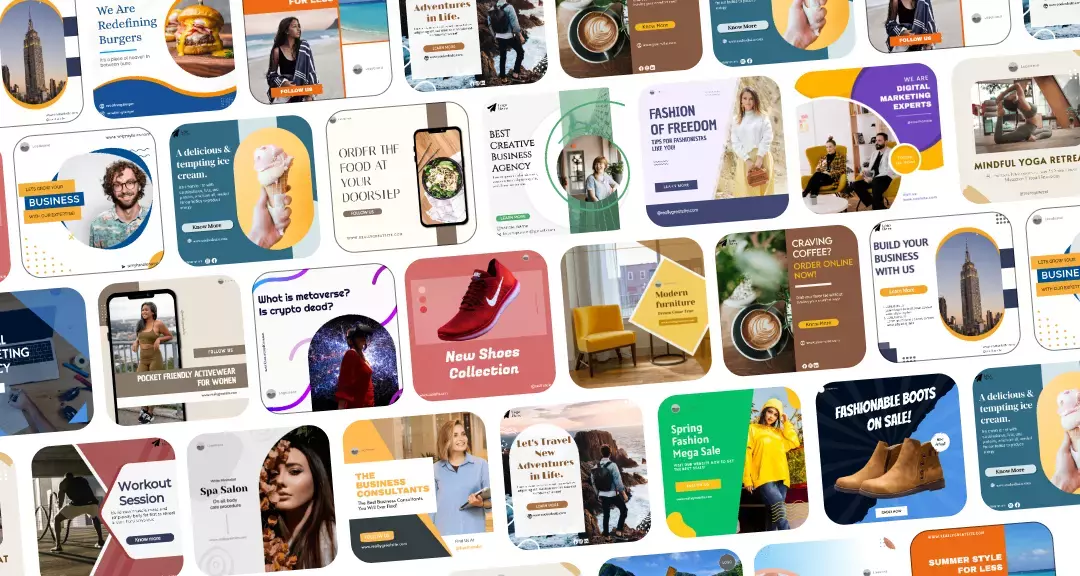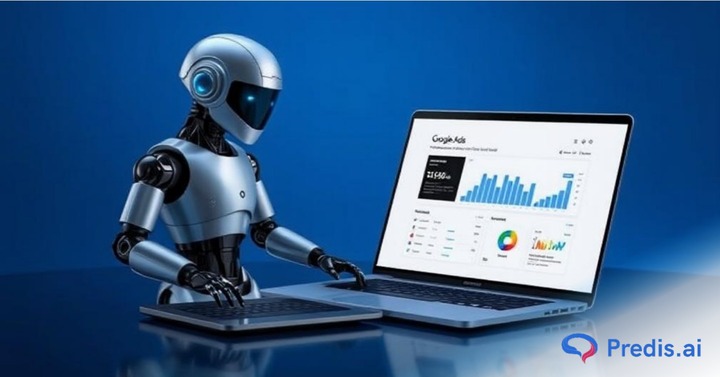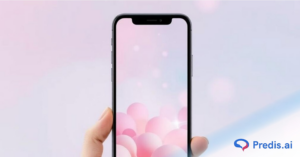Managing Google Ads has never been simple. Every keyword bid, audience tweak, and copy variation adds layers of complexity and the stakes are high. A few missteps can mean wasted budgets and underperforming campaigns. For agencies, PPC consultants, and growing e-commerce brands, the challenge isn’t just running ads; it’s managing them at scale while maintaining profitability and precision.
Here’s where AI steps in. Artificial intelligence is no longer a futuristic buzzword it’s quietly reshaping how Google Ads campaigns are built, optimized, and scaled. From predictive bidding that anticipates conversions before they happen to automation systems that adjust spend in real time, AI removes the guesswork and adds strategic intelligence.
What this really means is: you spend less time reacting and more time planning. You’re not manually checking campaign performance every morning; you’re reading insights that already filtered the noise. For smaller businesses, this translates into cost efficiency and smarter allocation of limited budgets. For agencies, it’s the ability to manage multiple client accounts without drowning in spreadsheets.
In this guide, we’ll explore the best AI tools that make Google Ads management smarter, faster, and more data-driven. You’ll see exactly what each tool does, the kind of businesses it suits, and how to integrate it seamlessly into your workflow. By the end, you’ll know which platforms can help you move from micromanaging campaigns to mastering them.
TL;DR 🖋
AI is transforming Google Ads from manual tweaking to intelligent automation. These top tools help agencies and businesses optimize campaigns, enhance creatives, and predict performance all with less effort.
Top 7 Tools to Know:
- Predis.ai
- Optmyzr
- Adalysis
- Morphio
- Albert.ai
- Revealbot
- WordStream Advisor
Understanding the Role of AI in Google Ads Management
AI isn’t just a helper, it’s becoming the backbone of effective PPC management. Let’s break down how it actually reshapes the workflow for advertisers.
Traditional PPC relied heavily on human intuition and manual adjustments. Marketers tested keywords, rotated ads, and set bids by hand. The problem? Humans can’t process massive datasets in real time. AI can.
- AI-driven tools analyze performance trends faster and detect opportunities or inefficiencies instantly.
- Machine learning optimizes bids by predicting the likelihood of conversion for every auction.
- Google’s native systems—Smart Bidding, Responsive Search Ads, and Performance Max—already use AI to adjust strategy dynamically.
- Third-party tools push this further by layering more advanced analytics, creative testing, and cross-channel optimization.
Criteria for Choosing the Right AI Tool for Google Ads
AI tools come in all shapes and capabilities. Some focus on bid optimization, others on creative testing or anomaly detection. The key isn’t to grab the “most advanced” one it’s to choose the tool that actually aligns with your business goals and team workflow.
What Businesses Should Look For
Before jumping into demos and free trials, clarify what your campaigns need.
- Compatibility matters: Make sure the AI tool integrates smoothly with Google Ads Manager, Google Analytics 4, and any CRM systems you use.
- Ease of use: A sophisticated AI engine is useless if your team can’t interpret its data. Look for dashboards with clear insights, not jargon.
- Automation depth: Some tools automate just reporting, others manage full bid adjustments, budget pacing, and A/B testing.
- Transparency: Prioritize platforms that explain why they made specific optimizations. Blind automation can backfire if left unchecked.
Core AI Functionalities to Prioritize
A great AI tool should do more than save time—it should help you think smarter.
- Predictive bidding: The ability to forecast which clicks are likely to convert based on past behavior.
- Anomaly detection: Real-time alerts when performance drops or spend spikes.
- Budget pacing: Automatic reallocation of spend to high-performing campaigns.
- Keyword optimization: Continuous refinement of keywords and negatives based on live search intent data.
- Creative suggestions: Some tools analyze ad copy or visuals to recommend improvements that align with best-performing variants.
These features together form a system that learns and improves with every campaign.
Pricing Models and Scalability
AI tools vary widely in cost and structure:
- Pay-as-you-go: Best for small businesses testing the waters.
- Percentage of ad spend: Works well for agencies with predictable budgets.
- Tiered subscriptions: Allow scalability as your campaigns grow in size or complexity.
Example: A small e-commerce brand saved 30% in overhead by choosing a tool with flexible per-account pricing instead of a fixed enterprise rate.
Whatever model you choose, ensure it grows with you not against you.
Avoiding Over-Automation
Automation can quickly turn into over-automation.
- Don’t let AI override human judgment—review campaign recommendations regularly.
- Maintain manual control over creative testing and brand messaging.
- Set thresholds for how far the AI can adjust bids or budgets before human approval.
- Use AI as an assistant, not an autopilot.
Best AI Tools to Manage Google Ads in 2025
Choosing the right AI tool can make or break your ad performance. The tools below are among the most effective options available today, each excelling in a different area from bid optimization to predictive analytics to creative generation.
Let’s explore what they do best, who they’re built for, and how they can sharpen your campaigns.
1. Adalysis — Deep Optimization for Professionals
Adalysis is designed for advertisers who crave precision and granular control. Built by PPC experts, it acts like a smart co-pilot that constantly scans your accounts for performance gaps.

Key Features
- Automated Ad Testing: Quickly identifies underperforming ads and pauses them automatically.
- Performance Alerts: Real-time notifications when keywords, bids, or conversions deviate from normal patterns.
- Quality Score Tracking: Monitors keyword health and surfaces insights to improve relevance.
- Advanced Account Auditing: Finds inefficiencies like duplicate keywords or conflicting negatives.
Ideal For: Agencies and large-scale advertisers managing multiple accounts or clients.
Example Case: A performance agency used Adalysis to automate ad testing across 25 accounts, improving click-through rate by 40% in three months.
Statistic: Advertisers using Adalysis report a 45% reduction in account optimization time.
2. Optmyzr — The All-in-One PPC Command Center
Optmyzr has become a household name among PPC pros, and for good reason. Founded by ex-Googlers, it combines deep automation with flexible control—ideal for those who want the power of AI without losing the ability to steer.

Key Features
- Rule Engine: Automate recurring optimization tasks based on your own parameters.
- PPC Investigator: Visualize why performance shifted—was it bids, keywords, or conversion lag?
- Smart Bidding & Budget Pacing: Auto-adjusts bids to maximize conversions within a set spend.
- Cross-Platform Integration: Works seamlessly with Google, Microsoft, and Amazon Ads.
Case Study: An e-commerce brand scaled its ROAS by 55% in two months using Optmyzr’s Rule Engine to automate daily bid adjustments.
Statistic: Used by over 10,000 advertisers worldwide (Optmyzr, 2024).
3. Albert AI — Autonomous Marketing Intelligence
Albert AI pushes automation to another level. It’s not just a tool—it’s a self-learning system that analyzes massive datasets, tests multiple campaign combinations, and refines strategy automatically.

Key Features
- End-to-End Automation: Manages audience targeting, creative testing, and bidding autonomously.
- Cross-Channel Optimization: Integrates insights from Google, Meta, and programmatic ad platforms.
- Predictive Modeling: Forecasts campaign outcomes based on behavioral data and conversion history.
- Creative Testing: Continuously experiments with copy and imagery to maximize engagement.
Case Study: A retail brand using Albert reduced cost per acquisition by 32% and tripled optimization speed.
Statistic: Albert’s AI achieves 3–5x faster optimization cycles than manual teams (Albert, 2024).
4. Revealbot — Automation Built for Agencies
Revealbot is the efficiency weapon for agencies juggling dozens of accounts. It streamlines campaign automation, reporting, and communication all in one place.

Key Features
- Rule-Based Automation: Automates campaign adjustments using custom logic (e.g., pause underperforming ads, boost high-ROAS ad sets).
- Slack Integration: Sends campaign alerts directly to your team’s workspace.
- Bulk Creation & Editing: Ideal for multi-account operations.
- Creative Testing Tools: Tracks ad variations and helps prioritize winners.
Case Study: A PPC consultant automated performance reports for 12 clients, reducing reporting time by 80%.
Statistic: Revealbot supports over $400 million in monthly ad spend (Revealbot, 2024).
5. Morphio — Predictive Analytics for Smarter PPC
Morphio doesn’t manage your ads it watches them like a hawk. Its strength lies in predictive analytics and anomaly detection, helping you prevent budget leaks before they spiral.

Key Features
- Forecasting: Predicts conversions, CPA, and spend patterns.
- Anomaly Alerts: Flags suspicious activity like sudden spend spikes or broken tracking.
- Budget Optimization: Suggests reallocation based on predicted performance.
- Multi-Source Data Integration: Connects to Google Ads, Analytics, and Meta for full visibility.
Case Study: A SaaS company saved $25,000 per month after Morphio detected early signs of wasted spend.
Statistic: 70% of Morphio users report significant improvements in budget efficiency (Morphio, 2024).
6. Predis.ai — AI for Image Ad Creation
Predis.ai is built for one specific purpose: fast, high-quality ad creative generation. While it doesn’t manage campaigns, it’s incredibly effective for building image ads at scale.

Key Features
- Text-to-Ad Visuals: Enter a short brief, and Predis generates full ad creatives—text, layout, and color suggestions included.
- Smart Design AI: Adjusts visuals to match brand colors and ad dimensions automatically.
- Creative Variations: Generate multiple ad versions for A/B testing in minutes.
Example Use Case: A local e-commerce business created 10 ad variations in five minutes, cutting design turnaround time by 80%.
Statistic: Predis users report 2.8x faster creative production (Predis, 2025).
7. WordStream PPC Advisor — Smart Assistance for SMBs
WordStream remains one of the most trusted AI tools for small and mid-sized businesses. Its interface is simple, but the insights are surprisingly sharp.

Key Features
- AI Recommendations: Suggests weekly improvements—pause low-performing ads, adjust bids, or test new keywords.
- Keyword Discovery: Finds high-intent, low-cost keywords using AI analysis.
- Ad Copy Insights: Recommends changes to boost CTR and relevance.
- Performance Reports: Automatically delivered, visual, and beginner-friendly.
Case Study: A local plumbing business saw a 25% lift in conversions within six weeks after applying WordStream’s AI-driven suggestions.
Statistic: Used by over one million small businesses globally (WordStream, 2024).
The Growing Role of AI in Google Ads Management
1 From Manual Optimization to Machine Intelligence
- Just a few years ago, PPC managers were manually adjusting bids, testing ad copies, and juggling spreadsheets daily.
- The arrival of AI-powered tools changed everything — automating bid strategies, forecasting ROI, and optimizing ad creatives with precision.
- Google’s own evolution, from Smart Bidding to Performance Max campaigns, reflects a clear shift: AI isn’t optional anymore — it’s the new foundation of competitive ad management.
- According to Statista (2025), over 80% of digital marketers now use some form of AI in their ad campaigns, a figure expected to reach 95% by 2026.
- This trend underscores one truth: agencies and SMBs that fail to adapt will find their ad efficiency dropping fast.
2 What AI Brings to the Google Ads Table
- Predictive optimization: AI learns from historical campaign data to forecast which ads will perform best for specific audiences and times.
- Automated A/B testing: Instead of manual guesswork, AI rapidly tests multiple headlines, CTAs, and ad variations, identifying winners within hours.
- Real-time bidding: AI adjusts bids dynamically based on live auction signals like device, time of day, or audience behavior.
- Creative enhancement: Tools like Predis.ai or AdCreative.ai use natural language processing and computer vision to create scroll-stopping visuals and copy for display and social ads.
- Budget reallocation: Algorithms automatically shift spend toward higher-performing keywords and campaigns, improving ROI without constant human oversight.
Case Study: AI vs Manual Optimization
- A mid-sized e-commerce brand running $50,000/month in Google Ads tested manual vs AI-managed campaigns over 60 days.
- The AI-powered strategy used Optmyzr for automation and ChatGPT-based scripts for ad copy generation.
- Results:
- 27% higher CTR
- 34% lower cost per conversion
- 18% higher ROAS
- The AI setup required 60% less management time — freeing up the team to focus on strategy rather than maintenance.
Conclusion
AI has taken Google Ads management from tedious, manual tweaking to intelligent, data-driven precision. Today, marketers can launch, optimize, and forecast campaigns faster and with more confidence than ever before. The right AI tools simplify every step of the journey: Predis.ai crafts visually compelling ad creatives, Optmyzr or Adalysis automate optimization and bidding, while Morphio predicts outcomes and flags anomalies before they impact performance.
But here’s the thing these tools are only as powerful as the data and intent behind them. The more you feed AI clean, well-structured data, the more accurate and efficient it becomes. Over time, your ad engine starts to “learn” your business adapting to market shifts, seasonal changes, and even customer sentiment.
The real advantage isn’t about replacing human marketers it’s about freeing them. AI handles the repetitive, number-heavy tasks so teams can focus on what machines can’t replicate: creative storytelling, emotional intelligence, and brand intuition.
If you haven’t already, start small pick one AI tool this month, run controlled tests, measure results, refine your setup, and scale what works. The sooner you integrate AI into your ad strategy, the sooner you future-proof your campaigns.















